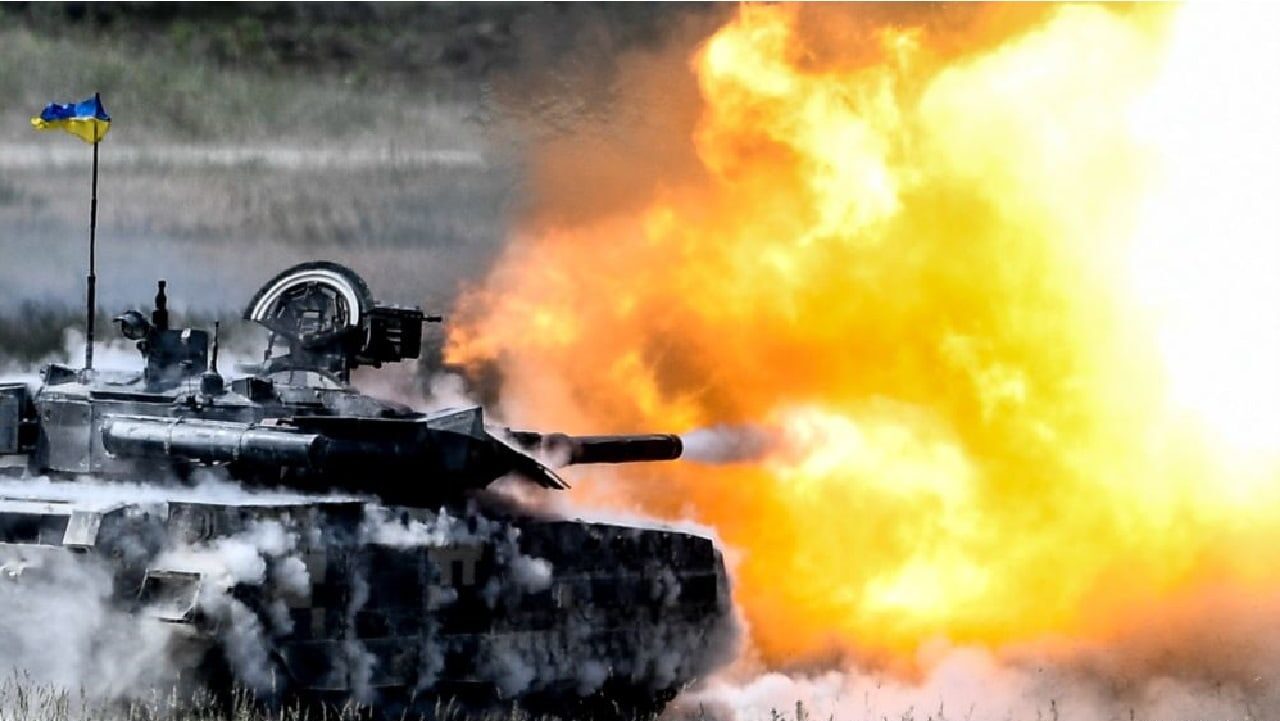The war rages on in Donbas: On day 121 of the Russian invasion of Ukraine, the Russian military is still looking for a breakthrough in the Donbas. The Ukrainian forces are holding on but also steadily losing ground. Against the backdrop of the fighting in eastern Ukraine, the European Union officially approved Ukraine’s application to join the organization.
Donbas: War in the East and Russian Casualties
The fighting in Severodonetsk continues as the Russian military advances from the south and threatens to cut off the key Ukrainian city in Donbas. The Ukrainian forces have been ordered to withdraw from the city.
“Russian forces have made substantial gains in the Severodonetsk-Lysychansk area over the last several days and Ukrainian troops continue to suffer high casualties, but Ukrainian forces have fundamentally accomplished their objective in the battle by slowing down and degrading Russian forces. Head of the Luhansk Oblast Administration Serhiy Haidai stated on June 23 that Ukrainian troops may have to retreat to avoid encirclement in Lysychansk, which indicates that Ukrainian authorities are setting conditions to prepare for the ultimate loss of both Severodonetsk and Lysychansk,” the Institute for the Study of War assessed in its latest update on the war.
“The Kremlin’s ideological fixation on the capture of Severodonetsk, much like the earlier siege of Azovstal, will likely be to the ultimate detriment of Russian capabilities in future advances in Ukraine. The loss of Severodonetsk is a loss for Ukraine in the sense that any terrain captured by Russian forces is a loss—but the battle of Severodonetsk will not be a decisive Russian victory,” the Institute for the Study of War added.
The Ukrainian Ministry of Defense claimed that as of Friday, Ukrainian forces have killed approximately 34,530 Russian troops (and wounded approximately thrice that number), destroyed 216 fighter, attack, and transport jets, 183 attack and transport helicopters, 1,507 tanks, 759 artillery pieces, 3,637 armored personnel carriers, 241 Multiple Launch Rocket Systems (MLRS), 14 boats and cutters, 2,553 vehicles and fuel tanks, 99 anti-aircraft batteries, 622 tactical unmanned aerial systems, 60 special equipment platforms, such as bridging vehicles, and four mobile Iskander ballistic missile systems, and 137 cruise missiles shot down by the Ukrainian air defenses.
Mercenary Pilots and Force Generation Woes
In its daily estimate of the war, the British Ministry of Defense focused on the use of mercenaries by Moscow and some of the issues they face in the fighting in Ukraine.
“Ukrainian forces have announced that the pilot of a Russian Su-25 FROGFOOT ground attack aircraft shot down on 17 June was captured shortly afterwards. The pilot has confessed to being a former Russian air force Major, who had taken employment as a Wagner military contractor and had flown several missions during the conflict,” the British Military Intelligence stated.
One of the major problems Russian President Vladimir Putin and the Kremlin are facing with regard to the war in Ukraine is force generation. The Russian military simply lacks sufficient numbers of trained and experienced professional soldiers to deploy in Ukraine.
Since Putin hasn’t declared war on Ukraine and continues to maintain that this is a “special military operation,” Moscow can’t trigger a mobilization that would add hundreds of thousands or even millions of troops to the ranks of the Russian military. As a result, Russian commanders have to rely on mercenaries and volunteers increasingly. The former mainly come from the infamous Wagner Group, a private military company with very close ties to Putin and the Kremlin that has been making Moscow’s bid around the world for the past decade or so.
“The use of retired personnel, now working as Wagner contractors, to conduct close air support missions indicates that the Russian air force likely is struggling to support the invasion of Ukraine with sufficient aircrew. This is likely due to a combination of Russia’s insufficient numbers of suitably trained personnel and its combat losses,” the British Ministry of Defense added.
The Russian Aerospace Forces, in general, have displayed a lackluster performance in Ukraine. Despite over four months of war, the skies above the battlefield are still contested, and the Ukrainian Air Force still flies combat sorties. That is a considerable failure on the part of the Russians, who had a significant numerical and technological advantage on the onset of the conflict.
“Whilst conducting his missions, the Russian pilot reportedly used commercial GPS devices rather than Russian military navigation equipment. This likely indicates that Wagner aircraft are older models of the Su-25 and that the Russian air force is not providing Wagner with up-to-date avionics equipment,” the British Military Intelligence assessed.
1945’s New Defense and National Security Columnist, Stavros Atlamazoglou is a seasoned defense journalist specializing in special operations, a Hellenic Army veteran (national service with the 575th Marine Battalion and Army HQ), and a Johns Hopkins University graduate. His work has been featured in Business Insider, Sandboxx, and SOFREP.

